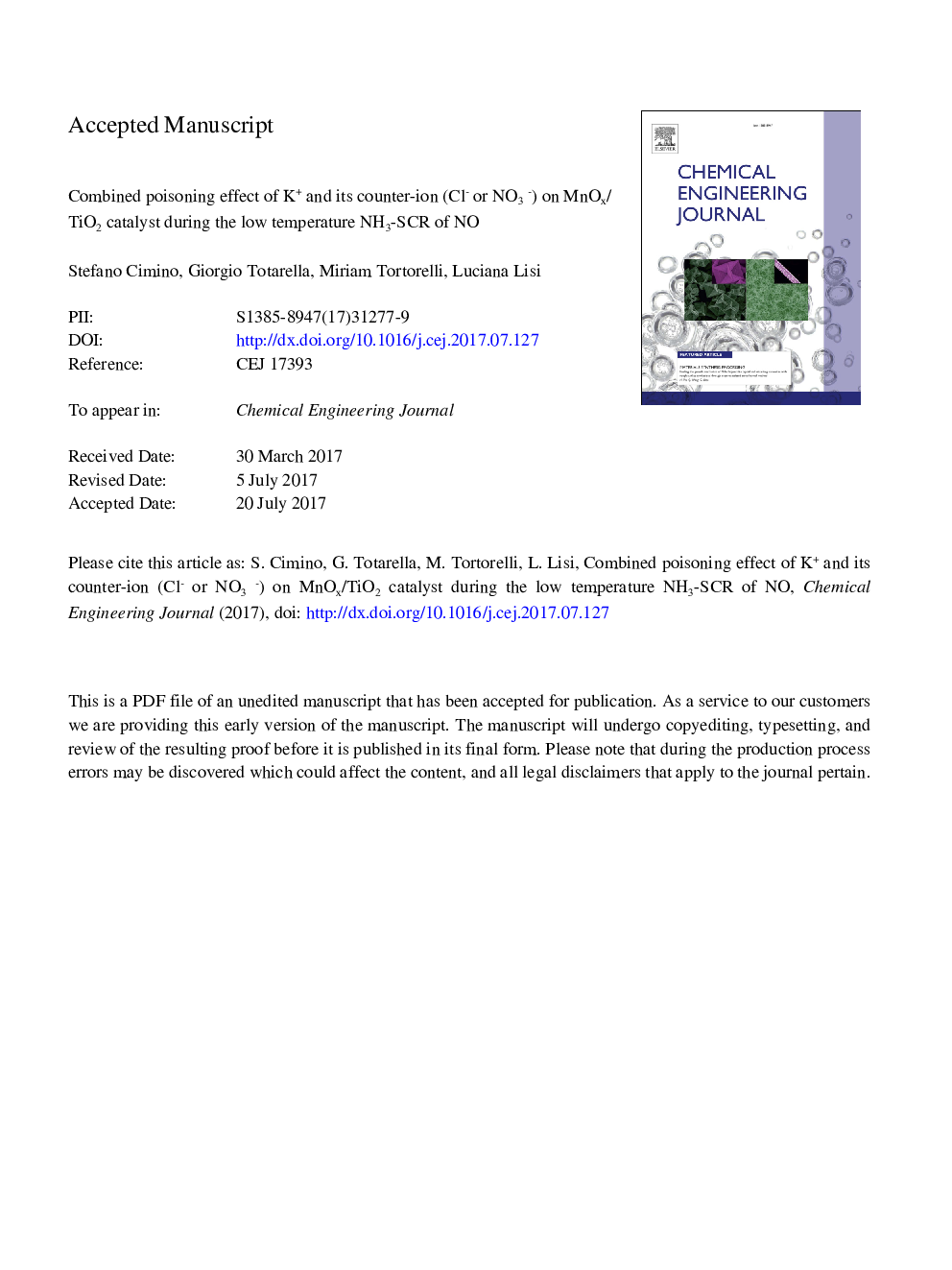| Article ID | Journal | Published Year | Pages | File Type |
|---|---|---|---|---|
| 4762867 | Chemical Engineering Journal | 2017 | 37 Pages |
Abstract
Heterogeneous catalysts for the low temperature NH3-SCR of NOx can be strongly deactivated due to the accumulation of specific compounds deriving from an upstream desulphurization unit, such as a Sea Water Scrubber. In this work, we set out to investigate the specific role of K+ and of its counter-ion (Clâ or NO3â) on the combined poisoning effect induced on the catalytic features of a MnOx/TiO2 system. Poisoning of the catalyst was performed ex situ by impregnation with two target loadings of each K salt, followed by a mild thermal treatment at 250 °C, corresponding to the maximum operating temperature of the SCR system. Fresh and poisoned catalysts were characterized by means of ICP-MS, BET, H2-TPR, NH3-Adsorption, NH3-Temperature Programmed Desorption-Reaction and in situ DRIFT and the impact of poisoning was assessed and compared for the NH3-SCR of NO as well as for the NH3-SCO (Selective Catalytic Oxidation) reaction.
Related Topics
Physical Sciences and Engineering
Chemical Engineering
Chemical Engineering (General)
Authors
Stefano Cimino, Giorgio Totarella, Miriam Tortorelli, Luciana Lisi,
